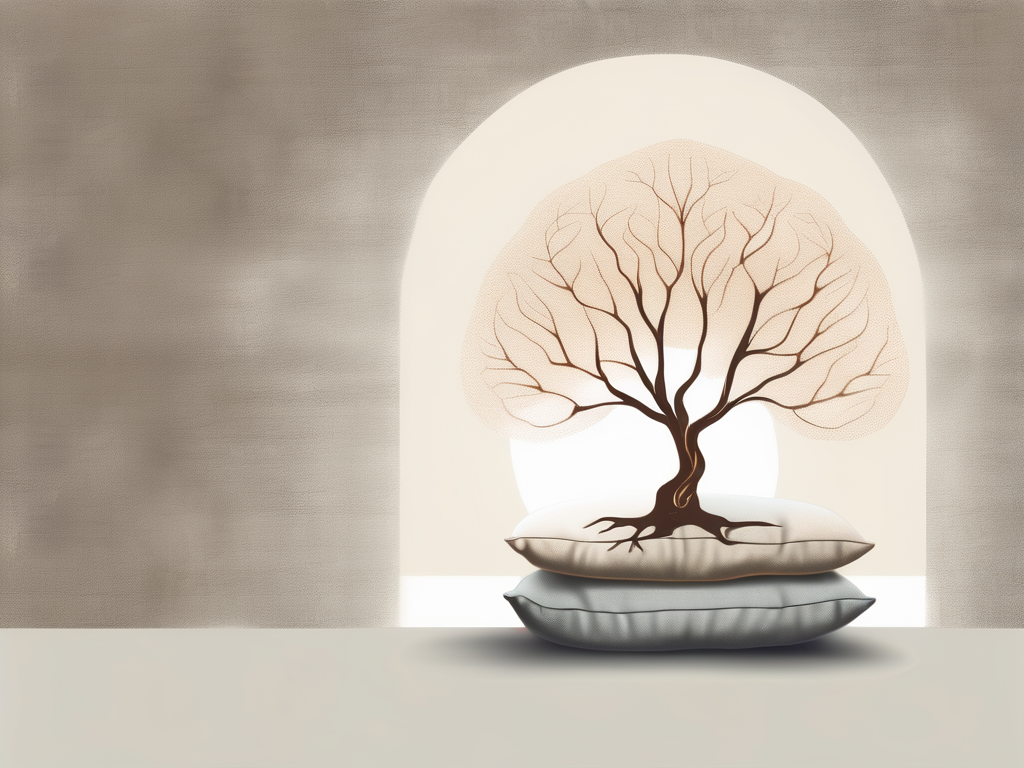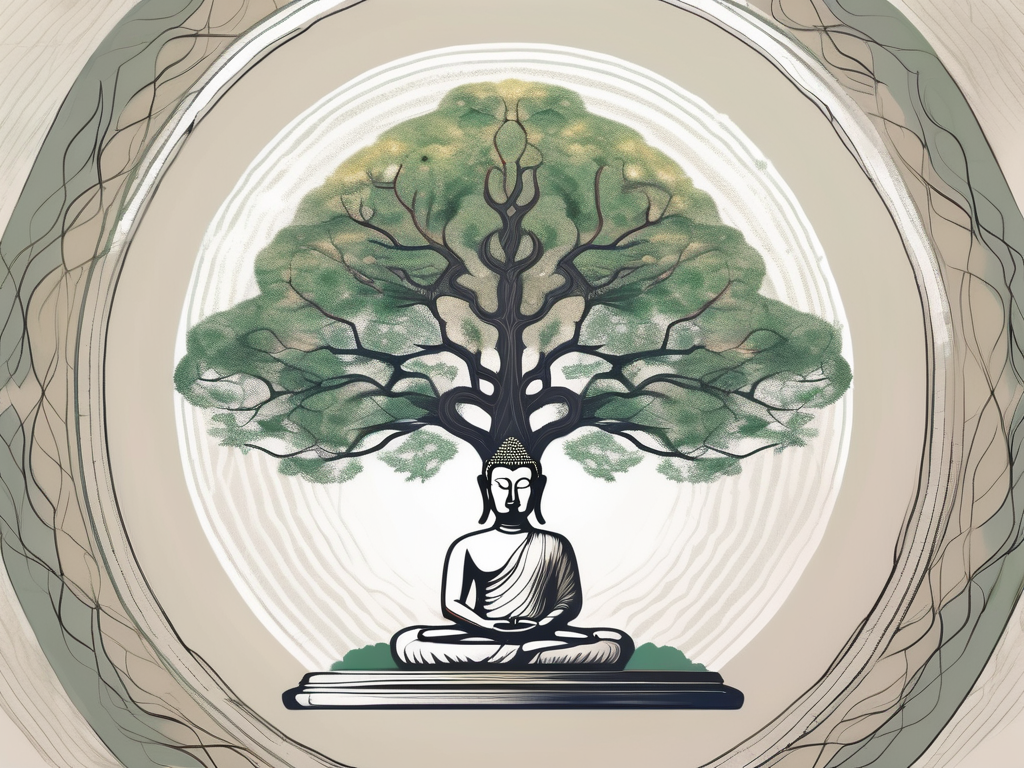Buddhism is a fascinating and ancient religion that dates back thousands of years. But what does it really mean to be Buddhist? In this article, we will dive deep into the world of Buddhism and explore its core beliefs, teachings, and practices. So, grab a cup of tea, find a comfortable spot, and let’s embark on this enlightening journey together.
Understanding Buddhism: An Overview
Before we delve into the specifics, let’s take a moment to understand Buddhism as a whole. It originated in the 5th century BCE, in what is now known as Nepal, with a man named Siddhartha Gautama, who later became known as the Buddha or the “Enlightened One.”
At its core, Buddhism is not just a religion but also a philosophy and a way of life. It emphasizes understanding the nature of reality and the pursuit of ending suffering for oneself and others. Buddhism does not require blind faith but encourages personal exploration and the development of wisdom through direct experience.
Buddhism is a rich and diverse tradition that encompasses a wide range of beliefs, practices, and cultural expressions. It has had a profound impact on the societies and cultures it has encountered throughout history.
The Origins and History of Buddhism
Let’s start by exploring the origins and history of Buddhism. As mentioned earlier, Buddhism began with Siddhartha Gautama, who was born into a royal family. At the age of 29, he renounced his luxurious lifestyle and embarked on a quest for truth and enlightenment.
Siddhartha’s journey took him through various spiritual practices and teachings, but he ultimately found that extreme asceticism did not lead to enlightenment. Instead, he discovered the Middle Way, a path of moderation between indulgence and self-mortification.
After years of intense meditation and self-reflection, Siddhartha finally achieved enlightenment under a Bodhi tree. From that moment, he dedicated his life to teaching others and spreading his newfound wisdom.
As Buddhism spread throughout Asia, it encountered different cultures and societies, resulting in the development of various branches and schools of thought. These different branches, such as Theravada, Mahayana, and Vajrayana, have unique interpretations of Buddhist teachings and practices.
Theravada Buddhism, also known as the “Doctrine of the Elders,” is the oldest surviving branch and is primarily practiced in Southeast Asia. It emphasizes the individual’s path to enlightenment through meditation and ethical conduct.
Mahayana Buddhism, on the other hand, emphasizes compassion and the pursuit of enlightenment for the benefit of all beings. It is prevalent in East Asia, including China, Korea, and Japan, and encompasses various schools such as Zen, Pure Land, and Nichiren Buddhism.
Vajrayana Buddhism, often referred to as Tibetan Buddhism, is known for its esoteric practices and rituals. It incorporates elements of shamanism and tantra and is practiced primarily in Tibet, Nepal, and Mongolia.
Core Beliefs and Teachings of Buddhism
Now, let’s explore the core beliefs and teachings of Buddhism. At the heart of Buddhism are the Four Noble Truths, which provide a framework for understanding and alleviating suffering.
The First Noble Truth states that life is inherently marked by suffering, dissatisfaction, and impermanence. This suffering can manifest in various forms, including physical pain, emotional distress, and existential angst.
The Second Noble Truth teaches that the cause of suffering is craving and attachment. It is our attachment to desires, possessions, and ego that perpetuates the cycle of suffering.
The Third Noble Truth offers hope by proclaiming that there is a way to end suffering. This way is known as the Noble Eightfold Path, which consists of ethical conduct, mental discipline, and wisdom.
The Fourth Noble Truth emphasizes the importance of practicing the Noble Eightfold Path to attain liberation from suffering. It teaches that through cultivating mindfulness, compassion, and wisdom, one can achieve enlightenment and break free from the cycle of birth, death, and rebirth.
In addition to the Four Noble Truths, Buddhism also encompasses teachings on karma, rebirth, and the concept of non-self. These teachings provide a deeper understanding of the interconnectedness of all beings and the impermanent nature of existence.
Overall, Buddhism offers a profound and transformative path for individuals seeking to find meaning, alleviate suffering, and cultivate wisdom and compassion. Its teachings continue to inspire and guide millions of people around the world, making it one of the most influential and enduring spiritual traditions in human history.
The Four Noble Truths: The Heart of Buddhism
The Four Noble Truths are the foundational teachings of Buddhism, providing a profound understanding of the nature of suffering and a path towards liberation. These truths offer a comprehensive framework for individuals seeking to navigate the complexities of human existence.
Exploring the Truth of Suffering
The first noble truth acknowledges the existence of suffering in the world. Buddhism recognizes that suffering is an inevitable part of human existence, and it can manifest in various forms — physical, emotional, and even existential. It encompasses not only the obvious pain and distress we experience but also the subtle dissatisfaction and unease that permeate our lives.
However, Buddhism goes beyond just acknowledging suffering; it aims to understand its nature and provide a path towards liberation from it. By delving into the depths of suffering, Buddhism offers a profound exploration of the human condition, inviting individuals to confront the realities of life and find meaning amidst the challenges.
Through this exploration, practitioners gain insight into the impermanence of all things and the interconnectedness of existence. They come to understand that suffering is not isolated but is intricately woven into the fabric of life.
Understanding the Cause of Suffering
The second noble truth delves into the causes of suffering. Buddhism teaches that attachment, craving, and ignorance perpetuate suffering and dissatisfaction in our lives. By identifying and understanding these causes, we can begin to address and transcend them.
Attachment refers to the clinging and grasping onto things, people, or experiences, believing that they will bring lasting happiness. Craving arises from this attachment, as we constantly seek pleasure and avoid pain. Ignorance, on the other hand, is the lack of understanding of the true nature of reality, leading to delusion and confusion.
Recognizing the impermanence of all things and practicing non-attachment is key to breaking free from the cycle of suffering. Buddhism encourages individuals to cultivate a sense of detachment, allowing them to experience the world without being consumed by desires and expectations.
The End of Suffering: Nirvana
The third noble truth offers hope by revealing that there is an end to suffering. This ultimate state of freedom from suffering is known as Nirvana. It is a profound state of enlightenment and liberation achieved through the realization of one’s true nature.
Nirvana is not a place or a destination but a profound shift in consciousness, where one is free from the grasping and aversion that cause suffering. It is a state of profound peace, clarity, and liberation, transcending the limitations of the ego and connecting with the boundless nature of reality.
While Nirvana may seem elusive and abstract, Buddhism teaches that it is attainable by anyone who diligently follows the path and cultivates the necessary qualities of wisdom, compassion, and ethical conduct.
The Path to End Suffering: The Eightfold Path
The fourth noble truth presents the Eightfold Path, which serves as a guide for individuals seeking to end suffering. The Eightfold Path consists of eight interconnected principles, including Right Understanding, Right Intention, Right Speech, Right Action, Right Livelihood, Right Effort, Right Mindfulness, and Right Concentration.
Each aspect of the Eightfold Path contributes to the development of a holistic and balanced approach to life. Right Understanding involves gaining insight into the nature of reality and the causes of suffering. Right Intention focuses on cultivating wholesome intentions and letting go of harmful desires.
Right Speech emphasizes the importance of truthful, kind, and compassionate communication. Right Action encourages ethical conduct and the avoidance of harm to oneself and others. Right Livelihood involves engaging in a profession that aligns with one’s values and does not cause harm.
Right Effort emphasizes the cultivation of wholesome qualities and the abandonment of unwholesome ones. Right Mindfulness involves developing a moment-to-moment awareness of one’s thoughts, feelings, and actions. Right Concentration focuses on the development of deep concentration and mental stability through meditation.
By following this path, individuals can cultivate wisdom, ethical conduct, and mental discipline, leading to self-transformation and the cessation of suffering. The Eightfold Path provides a comprehensive roadmap for individuals to navigate the complexities of life and attain liberation from suffering.
The Different Branches of Buddhism
Buddhism, a philosophy and spiritual tradition that originated in ancient India, has evolved and branched out into various traditions and schools throughout history. Each branch has its own unique teachings, practices, and cultural influences. Let’s take a closer look at some of the different branches:
Theravada Buddhism: The School of the Elders
Theravada Buddhism, also known as the “Doctrine of the Elders,” is the oldest surviving Buddhist tradition. It traces its roots back to the early teachings of the historical Buddha, Siddhartha Gautama. Theravada emphasizes the original teachings of the Buddha and focuses on personal spiritual development through ethical conduct, meditation, and wisdom.
Theravada Buddhism is prevalent in Southeast Asian countries like Thailand, Sri Lanka, Cambodia, and Myanmar. Monasticism plays a significant role in Theravada, with monks and nuns devoting their lives to the pursuit of enlightenment and serving as spiritual guides for lay practitioners.
Mahayana Buddhism: The Great Vehicle
Mahayana Buddhism emerged around the 1st century CE and spread throughout East Asia, including China, Japan, Korea, and Vietnam. It emphasizes compassion and the pursuit of enlightenment not only for oneself but also for the benefit of all sentient beings. Mahayana teachings emphasize the concept of the bodhisattva, an enlightened being who compassionately postpones their own liberation to help others.
Mahayana encompasses a diverse range of practices, rituals, and beliefs. It includes various schools such as Pure Land Buddhism, Zen Buddhism, and Nichiren Buddhism. Pure Land Buddhism focuses on devotion to Amitabha Buddha and the aspiration to be reborn in his Pure Land, a realm of ultimate bliss. Zen Buddhism emphasizes direct experience and meditation, while Nichiren Buddhism centers around the chanting of the Lotus Sutra.
Vajrayana Buddhism: The Diamond Vehicle
Vajrayana Buddhism, also known as Tantric Buddhism, is a complex and esoteric tradition that originated in India and later spread to countries like Tibet, Bhutan, and Nepal. Vajrayana practitioners believe that enlightenment can be achieved in a shorter time through the skillful use of rituals, mantras, and meditation techniques.
One distinctive feature of Vajrayana is the importance of spiritual teachers known as lamas. These highly realized masters guide their students on the path to enlightenment, providing instructions and empowerments. Vajrayana also incorporates deity yoga, where practitioners visualize themselves as enlightened beings to cultivate their own Buddha nature.
Furthermore, Vajrayana Buddhism places great emphasis on the use of sacred symbols and ritual objects, such as mandalas, prayer wheels, and vajras (symbolic thunderbolts). These objects are believed to possess spiritual power and can aid in the practitioner’s spiritual journey.
These three branches of Buddhism, Theravada, Mahayana, and Vajrayana, represent the diversity and richness of Buddhist teachings and practices. Each branch offers its own unique path to awakening and liberation, catering to the needs and inclinations of different individuals and cultures. Exploring these branches can deepen our understanding of Buddhism as a whole and inspire us on our own spiritual journeys.
The Role of Meditation in Buddhism
Meditation plays a crucial role in Buddhist practice. It allows individuals to develop mindfulness, concentration, and insight, which are essential for self-discovery and liberation from suffering.
The Purpose and Benefits of Buddhist Meditation
Buddhist meditation aims to cultivate a calm and focused mind, leading to heightened awareness and a deeper understanding of oneself and the world. It helps practitioners develop clarity, compassion, and equanimity.
Regular meditation practice can also reduce stress, enhance emotional well-being, and promote a sense of inner peace.
Different Types of Buddhist Meditation
Buddhist meditation comes in various forms, each with its unique focus and techniques. Some common types include mindfulness meditation, loving-kindness meditation, and insight meditation.
Mindfulness meditation involves cultivating present-moment awareness, while loving-kindness meditation fosters feelings of goodwill and compassion towards oneself and others. Insight meditation aims to penetrate the nature of reality and gain insight into the impermanent and interconnected nature of all phenomena.
So, what does it mean to be Buddhist? It means embarking on a path of self-discovery, compassion, and liberation from suffering. It means embracing the teachings of the Buddha and incorporating mindfulness and ethical conduct into our daily lives. Buddhism invites us to explore our own minds and cultivate wisdom and compassion for the benefit of ourselves and all sentient beings.
Whether you choose to follow Theravada, Mahayana, Vajrayana, or any other tradition, the essence of Buddhism remains the same — awakening to the true nature of reality and living a life of peace, wisdom, and compassion.
May this article serve as a spark of curiosity and inspire you to explore Buddhism further, for it is a profound and transformative path that offers timeless wisdom in our ever-changing world.












